Henry William Inwood (1794-1843), the oldest son of the London architect William Inwood (c. 1771-1843), traveled to Greece in 1819 after the design of this Greek Revival church. It is one of the earliest and most representative examples of Greek Revival architecture in England. The borrowings were probably inspired by engravings or by architectural fragments brought back to England by Lord Elgin. The church is built of brick, faced with Portland stone which was originally white. The temple portico with six Ionic columns |
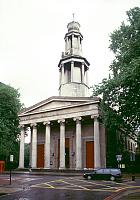
|
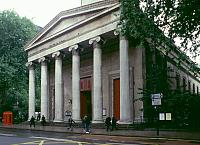
|
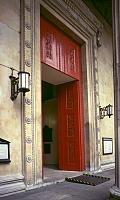
|
| |
|
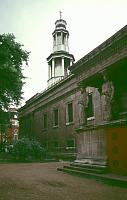
|
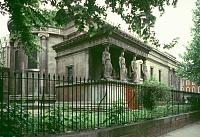
|
The church from the rear with the caryatid porchesFlanking the rear of the church are two projections or porches (used for the two vestries which guard the entrance to the burial vaults). These are supported by draped figures, based on the caryatids of the Erechtheum on the Athenian Acropolis, one of which is in the British Museum. |
| |
|
| The caryatids are made of terracotta built around a cast-iron core. Because of a mismeasurement, they were too tall and had to be shortened at the waist. |
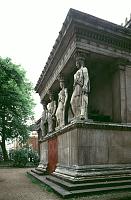
|
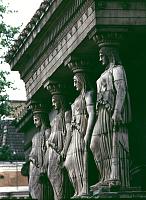
|
| |
|
The apse and decorative details (note the capitals and the acroteria) |
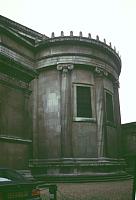
|
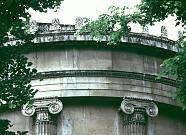
|
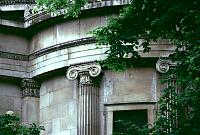
|
| |
|
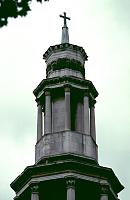
|
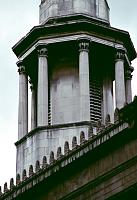
|
The lanternEnglish tradition "required" a lantern above the temple portico; here Inwood uses a kind of Gibbsian tower (see St. Martin-in-the-Fields) with borrowings from the Choragic Monument of Lysicrates and the Tower of the Winds.
|


 Click here to return to index of art historical sites.
Click here to return to index of art historical sites.
 Click here to return to index of artists and architects.
Click here to return to index of artists and architects.
 Click here to return to chronological index.
Click here to return to chronological index.
 Click here to see the home page of Bluffton College.
Click here to see the home page of Bluffton College.
